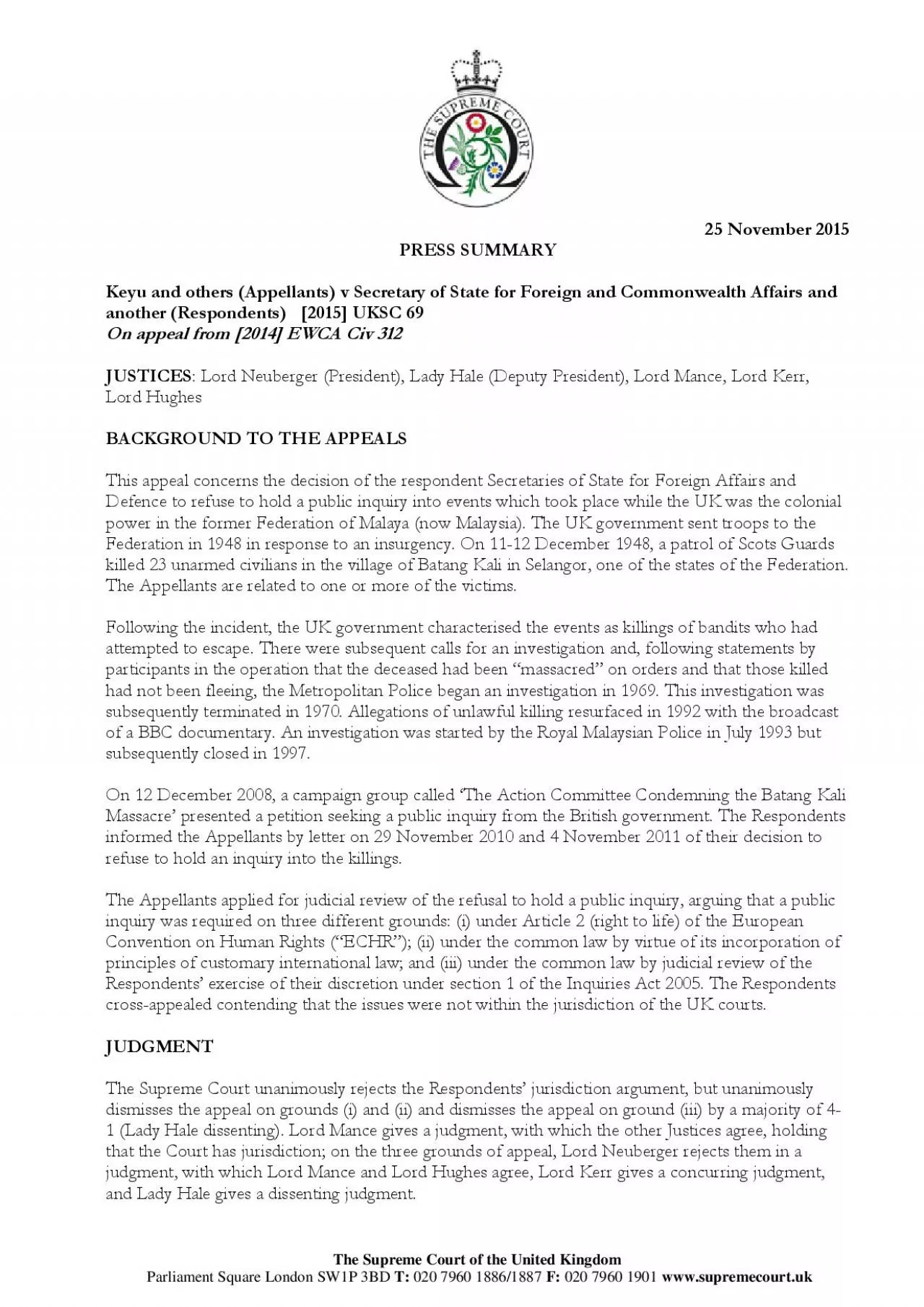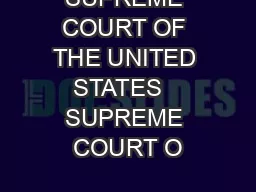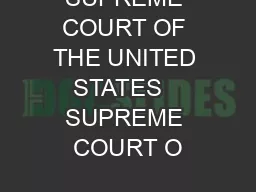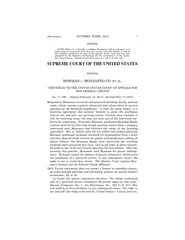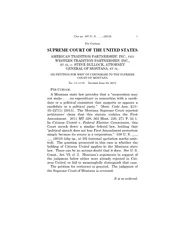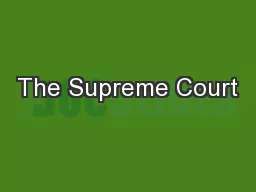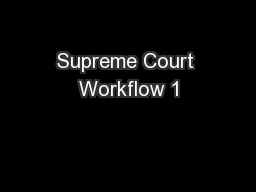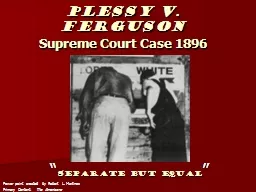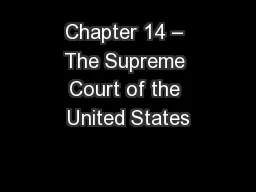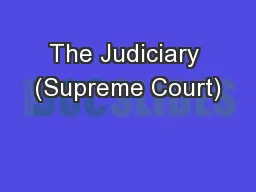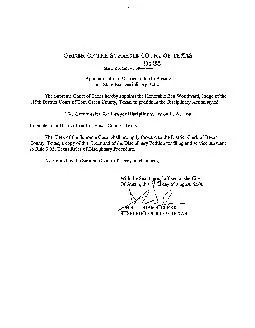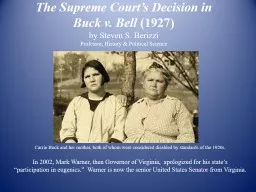PDF-The Supreme Court of the United Kingdom
Author : arya | Published Date : 2021-09-09
Parliament Square London SW1P 3BD T 020 7960 18861887F 020 7960 1901 wwwsupremecourtuk25 November 2015PRESS SUMMARYKeyu and others Appellantsv and another Respondents2015
Presentation Embed Code
Download Presentation
Download Presentation The PPT/PDF document "The Supreme Court of the United Kingdom" is the property of its rightful owner. Permission is granted to download and print the materials on this website for personal, non-commercial use only, and to display it on your personal computer provided you do not modify the materials and that you retain all copyright notices contained in the materials. By downloading content from our website, you accept the terms of this agreement.
The Supreme Court of the United Kingdom: Transcript
Download Rules Of Document
"The Supreme Court of the United Kingdom"The content belongs to its owner. You may download and print it for personal use, without modification, and keep all copyright notices. By downloading, you agree to these terms.
Related Documents

